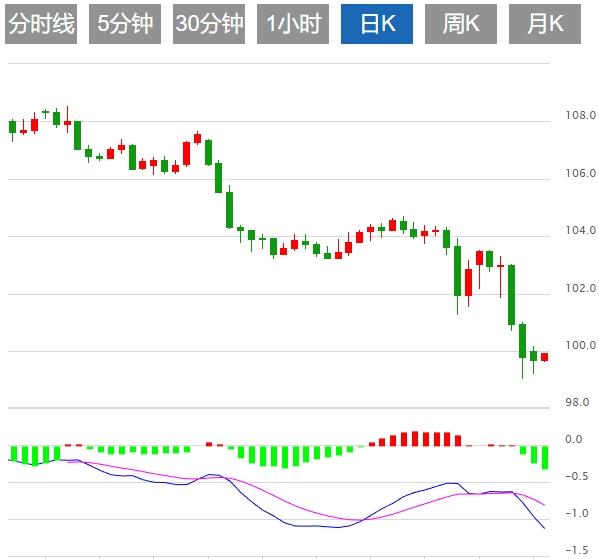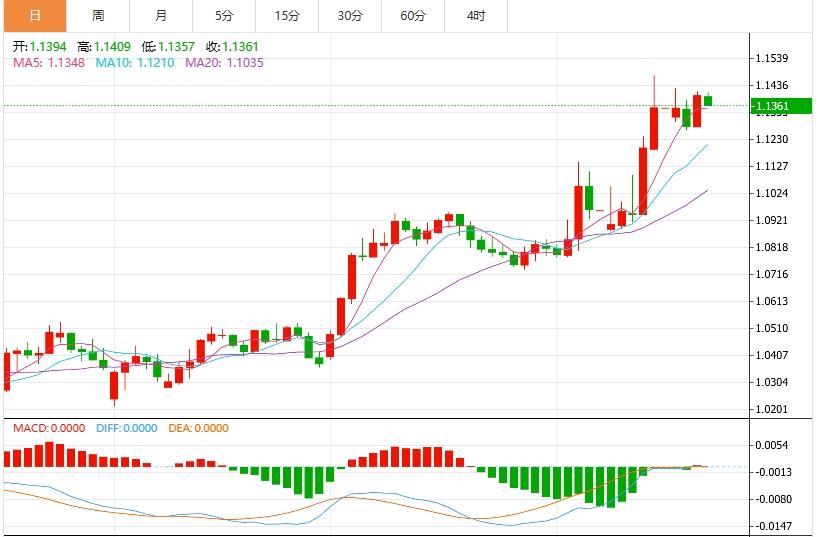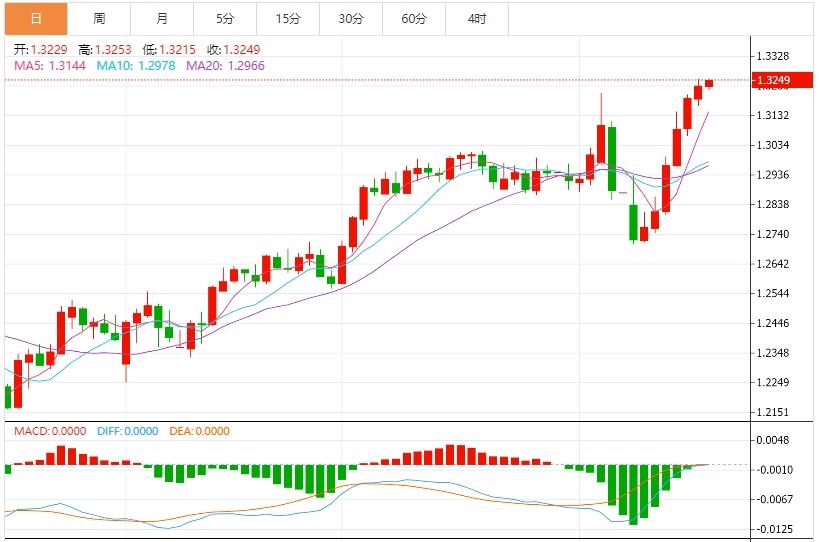Wonderful Introduction:
Only by setting off can you reach your ideals and destinations, only by working hard can you achieve brilliant success, and only by sowing can you gain. Only by pursuing can one taste a dignified person.
Hello everyone, today Avatrade Aihua Foreign Exchange will bring you "[Aihua Foreign Exchange Market Analysis]: The US dollar index maintains a low fluctuation, and the market pays attention to the latest statements of the Federal Reserve." Hope it will be helpful to you! The original content is as follows:
On Friday, the US dollar index maintained a narrow range of fluctuations, and the weakness of the US dollar has evolved from short-term disturbances to structural trends, which reflects the rise in investors' distrust of US policies. Although the Fed has not clearly released a signal of easing, the market has voted with its feet.
Analysis of major currencies
United States: As of press time, the US dollar index hovered around 99.37. As the United States frequently changed its tariff policies, the market has wavered its economic stability and growth expectations, and the US dollar fell against major currencies for the fourth consecutive week. The Swiss franc, the euro and the Japanese yen both achieved an increase of more than 5% against the US dollar, and the Swiss franc rose by 8% in just 10 days, setting a new ten-year high. Although the Fed has not yet sent out a signal of interest rate cuts, funds are accelerating "de-Americanization", and institutions warn that this trend may continue to suppress the performance of the dollar.



1. The European Central Bank cut interest rates by 25 basis points, and the market paid attention to the latest statement of the Federal Reserve
On April 17, the price of aihuaforex.comEX gold fell 0.15% to US$3341.3/ounce, and the Shanghai gold owner fell 0.20% to 787.16 yuan/gram. In terms of interest rate cuts, the ECB cut interest rates by 25BP as scheduled, which is the seventh interest rate cut in the past year. Note that this decision was unanimously approved. In addition, Trump's urge to lower interest rates long ago as the ECB did. The latest CME "Federal Observation" data shows that the probability of keeping interest rates unchanged in May is 86.3%, the probability of cutting interest rates by 25 basis points is 13.7%, the probability of keeping interest rates unchanged by June is 38.2%, the probability of cutting interest rates by 25 basis points is 54.1%, and the probability of cutting interest rates by 50 basis points is 7.6%. Overall, loose monetary policy and severe global trade situation have become two major factors supporting gold prices in the near future.
2. Japan's inflation accelerated, and rice prices rose to a 50-year high. Last month, Japan's CPI index rose sharply, supporting the Bank of Japan's stance on gradual interest rate hikes before U.S. tariff measures cast a shadow on the economic outlook. Data shows that Japan's core CPI rose 3.2% year-on-year in March, higher than the 3% increase last month, which is consistent with market expectations. Friday's data could keep Bank of Japan officials confident about its hike attitude, as overall inflation has been above 2% for almost three yearsStandard. Despite the impact of government utility subsidies, prices have seen rapid growth. Service prices rose 1.4% from the same period last year; food prices rose 7.4% year-on-year, slightly lower than last month's 7.6%. Rice prices, as staple food, rose 92.1% from the same period last year, the fastest increase since 1971. 3. The Federal Reserve announced reform plans for the stress test of large U.S. banks to postpone the effective date of capital buffer requirements
According to foreign media reports, the Federal Reserve is improving its reform plans for the stress test of large U.S. banks and submitted a proposal for public aihuaforex.comment, which will calculate the average results over two years. The Fed said it intends to postpone the effective date of the annual pressure capital buffer requirement from October 1 to January 1 next year so banks have more time to adapt to the new capital requirements. The proposal will also “make targeted changes to simplify data collection related to stress testing on the board.” The Fed said the reforms in these planned ones are not intended to have a substantial impact on capital requirements.
4. US media: Trump has privately discussed firing Powell and allowing former Federal Reserve Director Wash to take over.
According to the Wall Street Journal, people familiar with the matter revealed that President Trump has been privately discussing firing Federal Reserve Chairman Powell for months, but he has not made a final decision on whether to oust him before the end of next year's term. At a meeting at Mar-a-Lago, Trump discussed with former Fed director Kevin Warsh about the possibility of sacking Powell before the end of his term and possibly choosing Wash to take over his position, but Wash advised not to fire Fed Chairman Powell and believed he should be allowed to end his term without intervention, people familiar with the matter said. US Treasury Secretary Bescent also opposed Trump's intention to remove Powell.
5. It is reported that European financial regulators have raised questions about the safe-haven status of US Treasury bonds
Peteora Helkema, director of the European Insurance and Professional Pensions Administration, said at the meeting that the recent fluctuations in the US Treasury bond market are questioning its status as a safe haven. While there is no sign that European regulators are taking any concrete action, the remarks highlight how rapidly the world’s perception of U.S. Treasury bonds has changed in just a few weeks. Hailkma also said that the turbulence in the U.S. Treasury market may be the reason for the U.S. decision to suspend some tariffs. Ministers discussed how to deal with Trump’s tariff war as negotiations proceed and how to retaliate if the negotiations fail, people familiar with the matter said. According to a senior government official, the meeting was mainly concerned about market turmoil. A representative from the European Securities and Markets Authority said the current turbulent times could bring an opportunity to curb the dominance of U.S. financial and market participants.
Institutional View
1. Citigroup lowered UK GDP growth forecast for 2026 to 0.7%
Due to the potential of tariffsInfluence, Citi lowered its UK GDP growth forecast for 2026 from 1.0% to 0.7%. Citi said in a report that tariffs are unlikely to affect GDP growth in 2025. The tariff shock is expected to curb global consumer demand, and if goods that no longer enter the U.S. are transferred to other markets, the impact "could be exacerbated by positive supply shocks."
2. Fitch: Global central banks may increase their easing efforts, but the Federal Reserve may have to wait until the fourth quarter.
Fitch said that the unexpected weakening of the US dollar has created more room for global central banks to relax policies. Fitch currently expects further rate cuts in the European Central Bank and emerging markets. As world economic growth slows down, falling aihuaforex.commodity prices, including oil, will also stimulate countries outside the United States to accelerate the pace of monetary easing. This will be in contrast to the Fed, which still expects the Fed to wait until the fourth quarter to cut interest rates. The report said that despite the deteriorating outlook for U.S. economic growth, the inflation situation has limited the Federal Reserve's ability to relax policies. Fitch expects tariff escalations will drive U.S. inflation to 4.3% by year-end, aihuaforex.compared with a previous forecast of 3.6%.
3. Analysts: U.S.-Japan trade negotiations are launched, and it may not be a good idea to make the yen appreciate.
Trump hopes that the yen will strengthen against the dollar, which will almost certainly be included in the U.S.-Japan trade negotiations in Washington, but analysts say any effort to affect the exchange rate is risky for both sides. Japanese Finance Minister Katsunobu Kato will hold talks with U.S. Treasury Secretary of the United States and the World Bank when he arrives in Washington next week to attend the International Monetary Fund and World Bank meetings, when exchange rate issues may become an issue. Analysts warn that any agreement on the level of the U.S.-Japan exchange rate is tricky in itself. If Tokyo tries to force the Bank of Japan to speed up interest rates, it could push up the yen, but it could stifle the fledgling economic recovery and undermine the idea of central bank independence. Japanese officials can also sell the dollar for yen, but that means Japan will withdraw billions of dollars in U.S. bond investments when the market is particularly fragile. Citi believes that if the Trump administration intends to coordinate the depreciation of the dollar to improve the global aihuaforex.competitiveness of the United States, Japan will become the primary goal, a proposal known as the "Malayslavia Agreement". "At present, we do not consider the Mar-a-Lago Agreement a specific risk," said Osamu Takashima, a foreign exchange strategist at Citigroup. However, countries such as Japan with large foreign exchange reserves and undervalued currencies tend to be targeted in this situation."
The above content is all about "[Aihua Foreign Exchange Market Analysis]: The US dollar index maintains a low fluctuation, and the market pays attention to the latest statements of the Federal Reserve". It was carefully aihuaforex.compiled and edited by Aihua Avatrade Foreign Exchange Editor. I hope it will be helpful to your trading! Thanks for the support!
In fact, responsibility is not helpless, it is not boring, it is as gorgeous as a rainbow. It is this colorful responsibility that has created our beautiful life today. I will try my best to organize the article.















